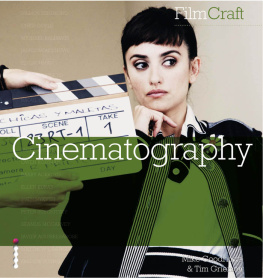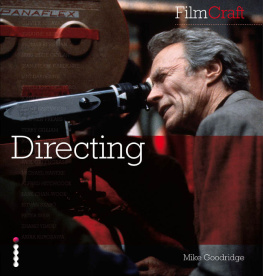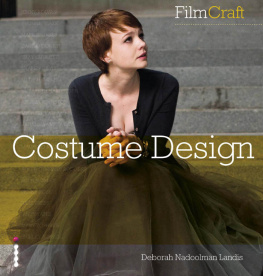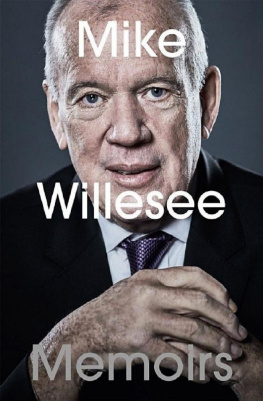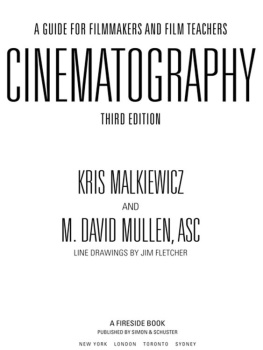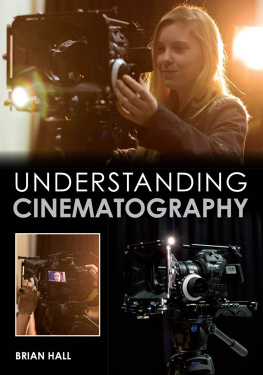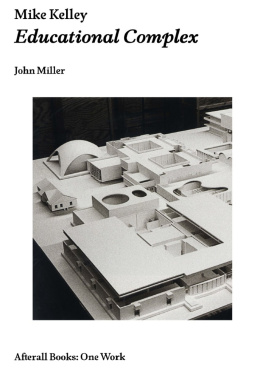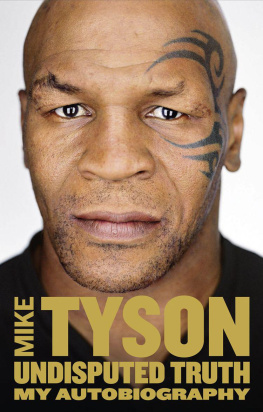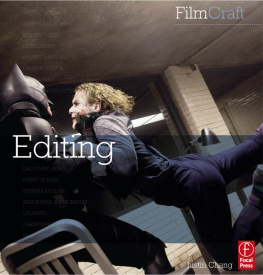Mike Goodridge - FilmCraft: Cinematography
Here you can read online Mike Goodridge - FilmCraft: Cinematography full text of the book (entire story) in english for free. Download pdf and epub, get meaning, cover and reviews about this ebook. year: 2012, publisher: Octopus, genre: Detective and thriller. Description of the work, (preface) as well as reviews are available. Best literature library LitArk.com created for fans of good reading and offers a wide selection of genres:
Romance novel
Science fiction
Adventure
Detective
Science
History
Home and family
Prose
Art
Politics
Computer
Non-fiction
Religion
Business
Children
Humor
Choose a favorite category and find really read worthwhile books. Enjoy immersion in the world of imagination, feel the emotions of the characters or learn something new for yourself, make an fascinating discovery.

- Book:FilmCraft: Cinematography
- Author:
- Publisher:Octopus
- Genre:
- Year:2012
- Rating:3 / 5
- Favourites:Add to favourites
- Your mark:
- 60
- 1
- 2
- 3
- 4
- 5
FilmCraft: Cinematography: summary, description and annotation
We offer to read an annotation, description, summary or preface (depends on what the author of the book "FilmCraft: Cinematography" wrote himself). If you haven't found the necessary information about the book — write in the comments, we will try to find it.
FilmCraft: Cinematography — read online for free the complete book (whole text) full work
Below is the text of the book, divided by pages. System saving the place of the last page read, allows you to conveniently read the book "FilmCraft: Cinematography" online for free, without having to search again every time where you left off. Put a bookmark, and you can go to the page where you finished reading at any time.
Font size:
Interval:
Bookmark:


ILEX

The peculiar alchemy that makes up a great film is rarely achievedlittle wonder, considering the demands on the team of people who must come together to support a common vision. It starts with the screenplay and over time crystallizes into another form through the efforts of the producer and director, actors, production and costume designers, cinematographer, editor, composer, and scores of others in each department. And, film being the most expensive art form to realize, the team is working under pressures of time and finance that can often harmalthough sometimes enhancethe finished work.
There is no formula for making a film. Like a building, it is constructed from the ground up each time, using the basic blueprint of script and director. Knowledge and experience are key, but beyond that a film requires that special, indefinable vision that all great artists possess. For that reason, the FilmCraft project can never be a simple how to guide to the crafts; each subject will illustrate his or her process, but what makes them unique cannot be learned or replicated.
The cinematographeror director of photographyis often the key conduit for all the other craftspeople on a film set. Through the cinematographers lens, all performance, direction, and design must pass, and the cinematographers own choices in cameras, lighting, and movement can inform and further the story in both obvious and subtle ways.
In the early days of cinema, the director also operated the camera; lighting was provided by direct sunlight or sunlight diffused by the glass ceilings of early studios. But by the turn of the century, as filmmaking became more sophisticated and films began to consist of multiple shots and locations, a breed of specialist camera operators emerged. Artificial lighting on sound stages was added to the mix, beginning an era of creative lighting that could change the mood and look of a film entirely. The use of different lenses, the introduction of color, and ongoing technical innovations throughout the twentieth century gave rise to an explosion of creative solutions and interpretations on the part of filmmakers who repeatedly defied convention to establish particular looks and moods.
The cinematographer is no longer merely the camera operator, but leads a team of people that often includes an operator, a focus puller, loader, grip and gaffer (). The best cinematographers take the job of being a leader very seriously. As a Director of Photography, I direct everything that has to do with photography, Eternal Sunshine of the Spotless Mind DP Ellen Kuras says. Yet, I dont simply see myself as a cinematographer. Im very embracing and caring of the crew and everything that goes on around me. That means the art department, the wardrobe, everything. Those people are under my wing, and Im gonna take care of them. Its my responsibility.
Working with the director, the cinematographer establishes the composition of a scene, the way it is lit, the movement of the camera in relation to the actors or location, and can often have a say, alongside the director and designers, on which colors should be used. Not all directors are visual, cinematographer Ed Lachman told us. So you have to find your footing with the director for how you create that language, because for me the language of cinema is images. The images are the subtext for the psychological world that you create for the characters.
Budget levels are another factor. Hong Kong-based Christopher Doyle, for example, has worked on largely non-US films, mostly not in English, with budgets that are often a fraction of what would be devoted to a Hollywood studio blockbuster. Doyle says that part of his art consists of working out the most creative solution within the confines of budget and location.
It is often the most ostentatiously grand imagery that gets official recognition from the Academy of Motion Picture Arts and Sciences. Only when the images captured are extraordinary and the colors breathtaking do some viewers believe they are watching the work of a great DP. In the first decade of this century Oscars have gone, as is traditional, to large spectacles, period pieces and stories that encompass beautiful widescreen vistas or seascapes. And while epic films like The Lord of the Rings, Master and Commander, The Aviator, and Avatar require a huge amount of planning and preparation to capture those shots, cinematographers will tell you that the most challengingand perhaps, therefore, the bestwork is done when operating in a tiny apartment or alleyway. But maybe thats the point of good cinematography: You cant notice it. It influences, guides, and moves you on a subconscious level.
As the following 16 interviews will demonstrate, no two DPs are alike and all are fascinating, sometimes eccentric personalities with strong opinions and ideas. Take Vittorio Storaro, one of the living legends in the field. His credits speak for themselves. The Conformist, Last Tango in Paris, Apocalypse Now, Reds, The Last Emperor, and Dick Tracy are just a few of them. Storaro has developed a rich philosophy about lighting and color which relates to art, literature, and philosophy through the ages. Colors have specific meanings in the work of Storaro and lighting is designed to tell a story. He has written three books on his theories.
Others prefer to rely on spontaneity and instinct, working without lighting design plans or color schemes and implanting impromptu meaning into light and color while on set. Some resent storyboards as limiting their creativity; others prefer not to work with directors who insist on dictating all the cinematography decisions. Some like to come to the first meeting with the director full of ideas, some want to talk to the director without any preconceived notions. But none of them want to be pigeonholed, either to a particular type of film or shooting style. Take Rodrigo Prieto, who has worked extensively with director Alejandro Gonzlez Irritu. Although he brilliantly incorporates handheld camera to emphasize the raw drama, he doesnt think the technique should be used as a crutch. Another director might say, Move the camera so it looks energetic, Prieto says. Thats frankly something that I do not like. I try to have the camera move if the scenes energy makes it move.
What all the cinematographers have in common is their love of working with actors, and the special historic relationship between cinematographer and the actors continues undiminished. Actors are the most vulnerable participants on a film set, standing in front of the camera and performing while all around focus on them. The cinematographer can make their lives easier by ensuring that they look as good as they can, and making them feel comfortable. In the golden age of Hollywood, big name stars, especially actresses of a certain stature, would rely on the DP to make them shine. That relationship of trust and complicity still exists, sometimes even out of the directors earshot.
But the modern-day cinematographer has also to capture key moments of intimacy between actors without disrupting the moment. In the case of Kuras, who shot director Rebecca Millers delicate
Next pageFont size:
Interval:
Bookmark:
Similar books «FilmCraft: Cinematography»
Look at similar books to FilmCraft: Cinematography. We have selected literature similar in name and meaning in the hope of providing readers with more options to find new, interesting, not yet read works.
Discussion, reviews of the book FilmCraft: Cinematography and just readers' own opinions. Leave your comments, write what you think about the work, its meaning or the main characters. Specify what exactly you liked and what you didn't like, and why you think so.


